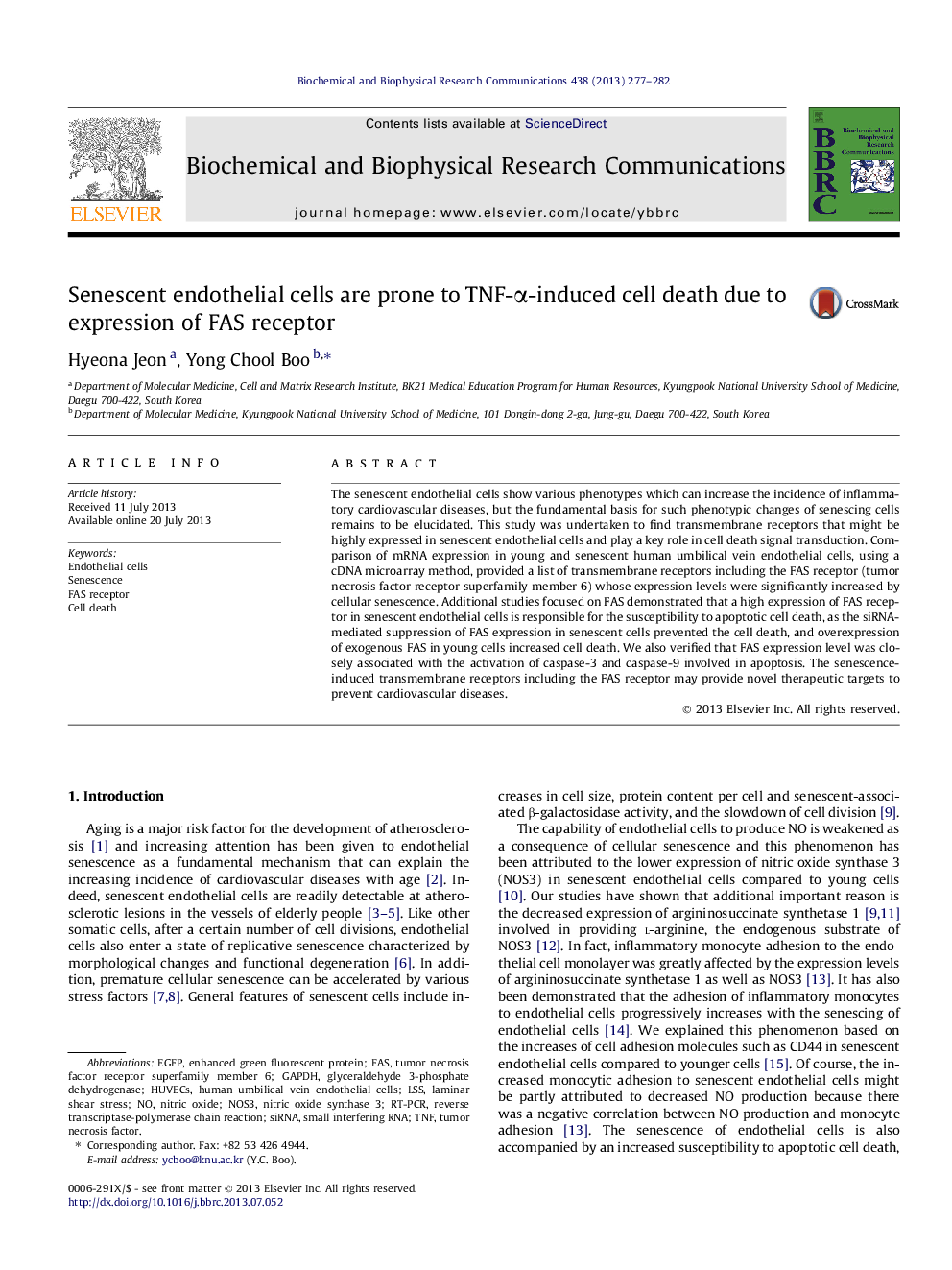| Article ID | Journal | Published Year | Pages | File Type |
|---|---|---|---|---|
| 10758058 | Biochemical and Biophysical Research Communications | 2013 | 6 Pages |
Abstract
The senescent endothelial cells show various phenotypes which can increase the incidence of inflammatory cardiovascular diseases, but the fundamental basis for such phenotypic changes of senescing cells remains to be elucidated. This study was undertaken to find transmembrane receptors that might be highly expressed in senescent endothelial cells and play a key role in cell death signal transduction. Comparison of mRNA expression in young and senescent human umbilical vein endothelial cells, using a cDNA microarray method, provided a list of transmembrane receptors including the FAS receptor (tumor necrosis factor receptor superfamily member 6) whose expression levels were significantly increased by cellular senescence. Additional studies focused on FAS demonstrated that a high expression of FAS receptor in senescent endothelial cells is responsible for the susceptibility to apoptotic cell death, as the siRNA-mediated suppression of FAS expression in senescent cells prevented the cell death, and overexpression of exogenous FAS in young cells increased cell death. We also verified that FAS expression level was closely associated with the activation of caspase-3 and caspase-9 involved in apoptosis. The senescence-induced transmembrane receptors including the FAS receptor may provide novel therapeutic targets to prevent cardiovascular diseases.
Keywords
TNFNOS3eGFPLSSRT-PCRFASGAPDHHUVECSSmall interfering RNAsiRNALaminar shear stressHuman umbilical vein endothelial cellsEndothelial cellstumor necrosis factorCell deathNitric oxide synthase 3Nitric oxideReverse transcriptase-polymerase chain reactionenhanced green fluorescent proteinSenescenceglyceraldehyde 3-phosphate dehydrogenaseFas receptor
Related Topics
Life Sciences
Biochemistry, Genetics and Molecular Biology
Biochemistry
Authors
Hyeona Jeon, Yong Chool Boo,
